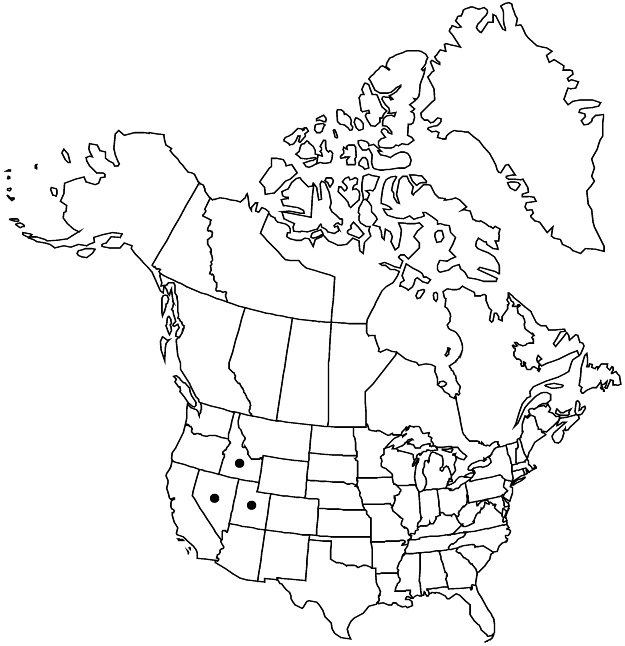Difference between revisions of "Eriogonum brevicaule var. laxifolium"
Great Basin Naturalist 27: 220. 1968.
FNA>Volume Importer |
imported>Volume Importer |
||
| (One intermediate revision by one other user not shown) | |||
| Line 8: | Line 8: | ||
}} | }} | ||
|common_names=Loose-leaf wild buckwheat | |common_names=Loose-leaf wild buckwheat | ||
| + | |special_status={{Treatment/ID/Special_status | ||
| + | |code=E | ||
| + | |label=Endemic | ||
| + | }} | ||
|basionyms={{Treatment/ID/Basionym | |basionyms={{Treatment/ID/Basionym | ||
|name=Eriogonum kingii var. laxifolium | |name=Eriogonum kingii var. laxifolium | ||
| Line 72: | Line 76: | ||
|publication title=Great Basin Naturalist | |publication title=Great Basin Naturalist | ||
|publication year=1968 | |publication year=1968 | ||
| − | |special status= | + | |special status=Endemic |
| − | |source xml=https:// | + | |source xml=https://bitbucket.org/aafc-mbb/fna-data-curation/src/2e0870ddd59836b60bcf96646a41e87ea5a5943a/coarse_grained_fna_xml/V5/V5_504.xml |
|subfamily=Polygonaceae subfam. Eriogonoideae | |subfamily=Polygonaceae subfam. Eriogonoideae | ||
|genus=Eriogonum | |genus=Eriogonum | ||
Latest revision as of 22:11, 5 November 2020
Plants mostly erect, 1–3.5 × 1–5 dm. Aerial flowering stems erect or nearly so, scapelike or dichotomous, (0.7–)1–2.5 dm, tomentose to floccose. Leaves: blade linear to narrowly oblanceolate, (1.5–)3–9(–12) × 0.1–0.5(–0.7) cm, tomentose abaxially, less so and grayish or occasionally greenish adaxially, margins plane or more often revolute. Inflorescences umbellate or cymose divided 1–3 times and 2–5(–8) cm, or capitate and 1–2 cm; branches tomentose to floccose. Involucres 1 per node or more commonly 3–7 per cluster, turbinate to turbinate-campanulate, (2–)2.5–4 × 1.5–3 mm, usually tomentose, occasionally thinly floccose or glabrous. Flowers (2–)3–3.5(–4) mm; perianth yellow or ochroleucous, glabrous.
Phenology: Flowering Jun–Sep.
Habitat: Sandy to clayey flats, washes and slopes, mixed grassland, sagebrush, and mountain mahogany communities, juniper, oak and montane conifer woodlands
Elevation: 1400-2800 m
Distribution

Idaho, Nev., Utah.
Discussion
Variety laxifolium is found in Idaho (Bear River County) and in Utah (Carbon, Duchesne, Emery, Juab, Millard, Salt Lake, Sanpete, Sevier, Tooele, Uintah, Utah, Wasatch, and Weber counties), where it occurs mainly on the western foothills of the Wasatch Range. Plants often have a reddish tomentum rather than the grayish tomentum of the consistently capitate expressions of vars. bannockense, nanum, and caelitum. Plants from the Tavaputs Plateau with exceedingly long, narrow leaf blades have been segregated as var. huberi, but plants with even longer leaves occur elsewhere (as in the Soldier Summit area of Utah County, Utah), and the difference is not taxonomically significant.
Selected References
None.